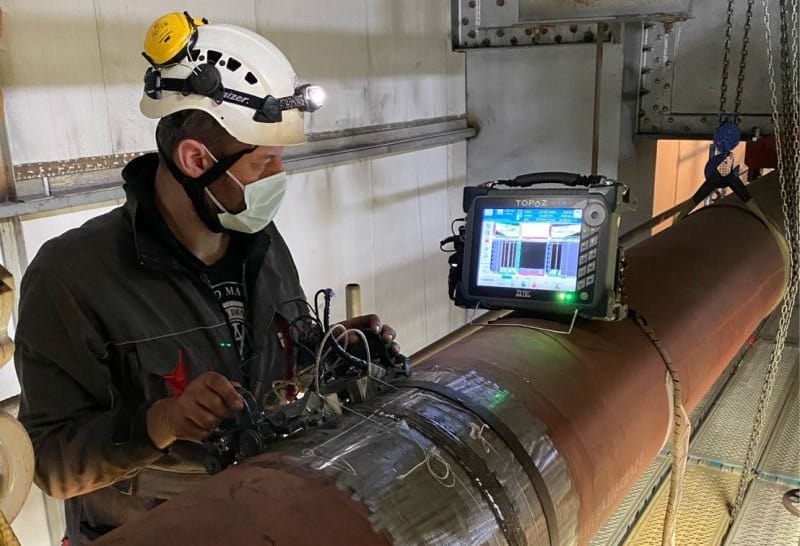Comprehensive Overview of Pipeline Welding Assessment Treatments
Pipe welding examination treatments play an essential duty in ensuring that welded connections fulfill rigid industry criteria and specs. From meticulous pre-welding evaluations to comprehensive post-weld analyses, a well-defined assessment process is essential for preserving the structural stability of pipelines.
Pre-welding Assessment Preparations
Before beginning the welding procedure, extensive pre-welding examination prep work are essential to make certain the stability and top quality of the weld joint. These prep work involve a meticulous assessment of the products to be bonded, the welding devices, and the work environment. By carrying out complete pre-welding evaluation preparations, potential concerns can be recognized and fixed early on, leading to high-grade and trustworthy weld joints.
Welding Treatment Certification
Extensive pre-welding inspection preparations lay the foundation for the critical procedure of Welding Treatment Qualification, making certain the stability and top quality of the weld joint. Welding Treatment Qualification (WPQ) is an essential action in the welding procedure that includes testing and accrediting welding procedures to guarantee they meet particular requirements and requirements. The WPQ procedure commonly includes welding treatment spec growth, welding treatment certification testing, and documentation of the results.
Throughout welding treatment spec growth, important information such as the welding procedure, welding products, joint design, and welding criteria are specified to develop a thorough treatment. Ultimately, welding treatment certification screening is conducted to validate the suggested treatment's honesty. This testing usually entails welding test vouchers that are subjected to various mechanical and non-destructive examinations to analyze the weld's high quality and adherence to the defined requirements.
In-process Weld Examination
Throughout the welding procedure, in-process weld evaluation plays a crucial role in ensuring the quality and integrity of the weld joint - Pipeline Welding Inspection. This kind of examination includes keeping an eye on the welding parameters, assessing the weld bead formation, and discovering any kind of potential issues or suspensions as they happen. By carrying out in-process weld assessments, welding operators can quickly resolve any type of concerns that may emerge, thus ensuring and preventing further problems that the last weld satisfies the needed specs
Usual approaches used for in-process weld examination include aesthetic inspection, fluid penetrant testing, magnetic fragment screening, ultrasonic testing, and radiographic testing. On the whole, in-process weld examination is you could try these out necessary for keeping the high quality and reliability of bonded pipelines.
Non-destructive Testing (NDT)
Non-destructive Testing (NDT) is a vital method used in pipeline welding examination to evaluate the stability of weld joints without triggering damage to the bonded framework. By using various NDT methods, examiners can review the high quality of welds and determine any defects or suspensions that may compromise the architectural stability of the pipeline. Usual NDT approaches used in pipeline welding inspection consist of Radiographic Screening (RT), Ultrasonic Screening (UT), Magnetic Particle Evaluating (MPT), Fluid Penetrant Testing (LPT), and Visual Screening (VT)
RT involves the usage of X-rays or gamma rays to produce images of great post to read the interior framework of the weld, permitting examiners to find issues such as porosity, splits, or insufficient blend. In addition, VT entails visual evaluation of welds to identify any noticeable blemishes.
Post-weld Evaluation and Paperwork


Paperwork of post-weld evaluation findings is essential for preserving quality assurance documents and hop over to these guys guaranteeing compliance with industry criteria and policies. In-depth records need to consist of details concerning the assessment techniques used, the place and nature of any type of issues discovered, and any type of corrective activities taken - Pipeline Welding Inspection. Correct documentation not only serves as a document of the weld's top quality but additionally help in future upkeep and inspection processes
Final Thought

In verdict, pipeline welding examination procedures play a critical role in ensuring the high quality and integrity of welds. From pre-welding examinations to post-weld paperwork, each step is necessary in preserving the safety and efficiency of pipelines. By complying with well established procedures and carrying out thorough examinations, potential flaws can be identified and dealt with prior to they bring about costly repair work or failings. Overall, adherence to appropriate evaluation protocols is crucial to the success of pipeline welding jobs.
From thorough pre-welding examinations to thorough post-weld evaluations, a well-defined assessment process is necessary for preserving the architectural soundness of pipes. By performing in-process weld evaluations, welding drivers can promptly address any type of problems that might arise, therefore protecting against additional problems and making sure that the final weld satisfies the required specifications.
Usual techniques made use of for in-process weld inspection consist of aesthetic inspection, liquid penetrant testing, magnetic particle testing, ultrasonic screening, and radiographic testing.Non-destructive Testing (NDT) is a vital technique used in pipe welding evaluation to analyze the stability of weld joints without causing damages to the bonded structure. Post-weld inspection includes numerous techniques to evaluate the welds for problems, consisting of visual evaluation, dye penetrant testing, magnetic fragment testing, ultrasonic testing, and radiographic testing.